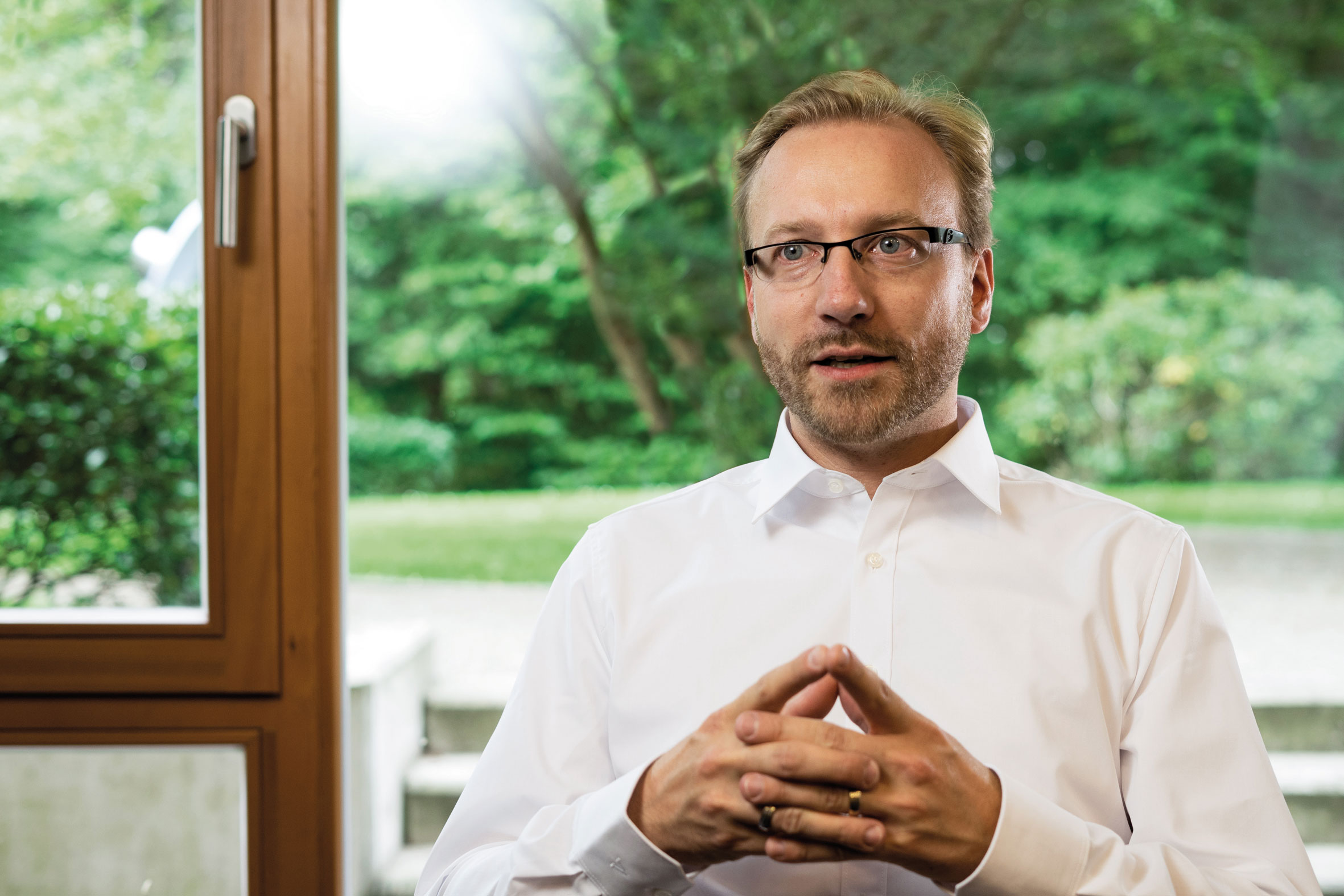Interview with Dr. rer. nat. Jan Rennies-Hochmuth
That sound preferences differ from person to person is a factor not to be underestimated in the design of multimedia solutions. The Hearing, Speech and Audio Technology Division (HSA) in Oldenburg is taking this into account and transporting its algorithms into the living room. Dr. rer. nat. Jan Rennies-Hochmuth, Head of Group »Personalized Hearing Systems« explains why the goal of »Better Hearing for Everyone« is an important principle in many respects.

Dr Rennies-Hochmuth, together with manufacturers »Humantechnik«, the Fraunhofer IDMT in Oldenburg has developed the »ear!s« TV sound system, which can be adjusted to individual sound preferences at the push of a button. For whom do you particularly recommend such a product?
The solution is intended for people who value good sound quality and excellent speech intelligibility. Our motto here is: Everyone hears differently well! Astonishingly, very little attention has been paid to this individual perception of sound in hearing systems to date. This applies both to headsets for work environments as well as for home TV systems.
»That’s why we’re using our algorithms to create a new level of sound quality from which both people with normal hearing as well as persons with impaired hearing can benefit.«
Doing justice to such different requirements sounds challenging. How do you guarantee that each user finds his or her favourite sound?
Our society’s media affinity is increasing constantly across all age groups and personalized solutions are available in many areas. However, that’s not yet the case as far as sound is concerned, although we know that standardized sound profiles cannot cater for more heterogeneous sound preferences. Customers want a simple but highly individual self-fitting option that should focus on the most common facets of acoustic wellbeing. We’ve identified these in multi-stage adaptation experiments. Our findings then formed the basis for intelligent and dynamic presettings. Particularly pleasant for the user: Sound and volume properties are automatically adjusted to hearing preferences when changing channel or during commercial breaks.
You’re concentrating not only on consumer solutions but also keeping industry in sight. Dr Rennies-Hochmuth, in future you’ll be in charge of a new group at the Fraunhofer IDMT dedicated to human-machine interaction in production. To what extent does this support the idea of better hearing for everyone?
Digitalization and artificial intelligence are playing an ever greater role in production environments. Raising efficiency is increasingly becoming the deciding competitive factor. That’s why we consider the optimum and safe design of human-technology and human-human interaction to be crucial. In our new group, we’re planning to explore – by bundling the diversified expertise of the different groups at the Fraunhofer IDMT in Oldenburg – acoustic approaches in the area of Industry 4.0. These range from reliable voice control to customized recommendations based on acoustic monitoring. Communication in noisy workplaces is also an important application scenario. At the end of the day, we’re rising in each case to the challenge of making optimum hearing – be it on the side of the human or of the machine – the basis for better interaction.
Is the grant you received this year from the »Klaus Tschira Boost Fund« helpful here?
Of course! This funding gives us the freedom to create a foundation for future applications through further basic research in the field of speech intelligibility. Despite many years’ research work, knowledge gaps still exist regarding how human hearing functions in complex hearing situations and how interference restricts communication. Findings in this field are bringing us a big step closer to our goal of »Better Hearing for Everyone«.
Last modified:
 Fraunhofer Institute for Digital Media Technology IDMT
Fraunhofer Institute for Digital Media Technology IDMT